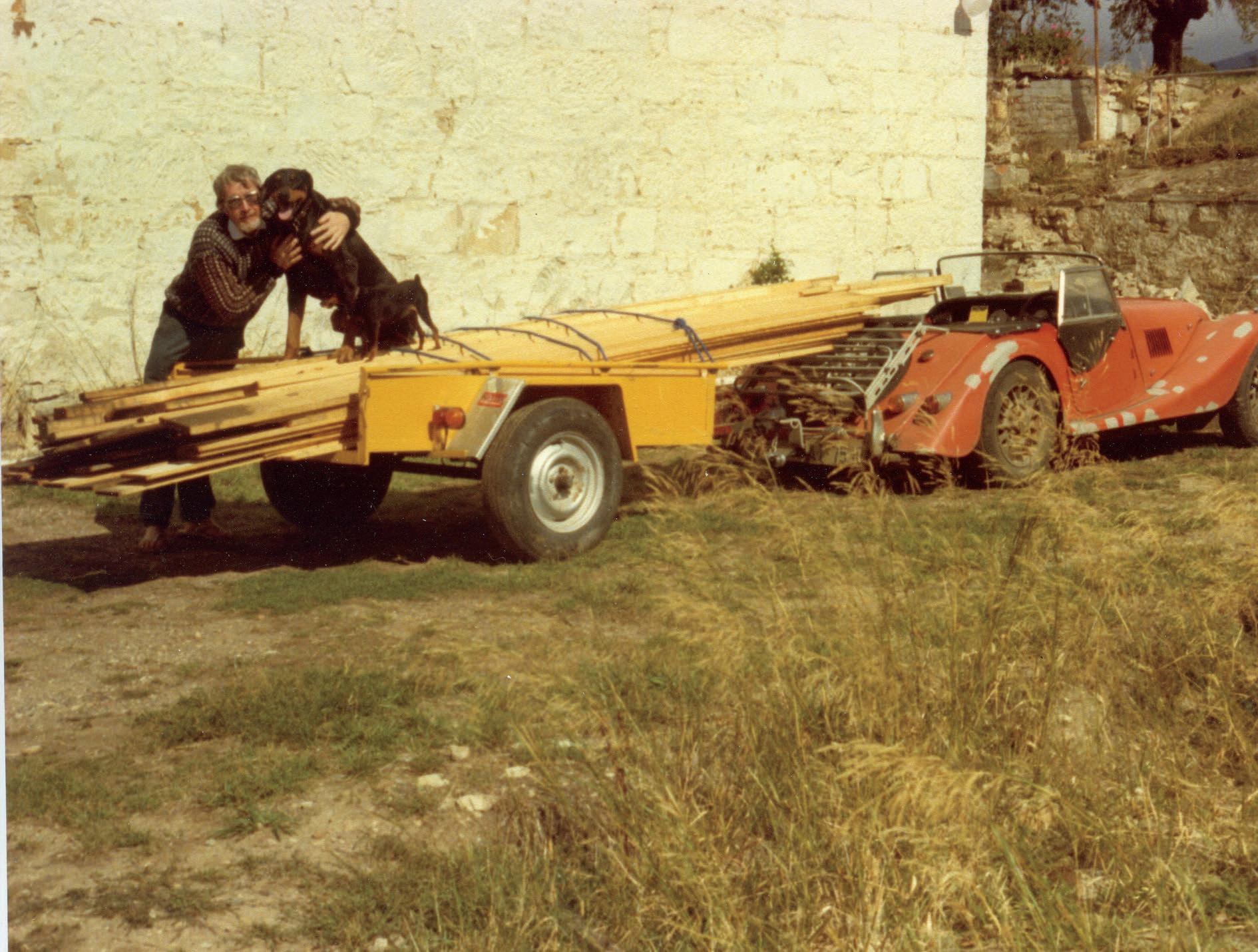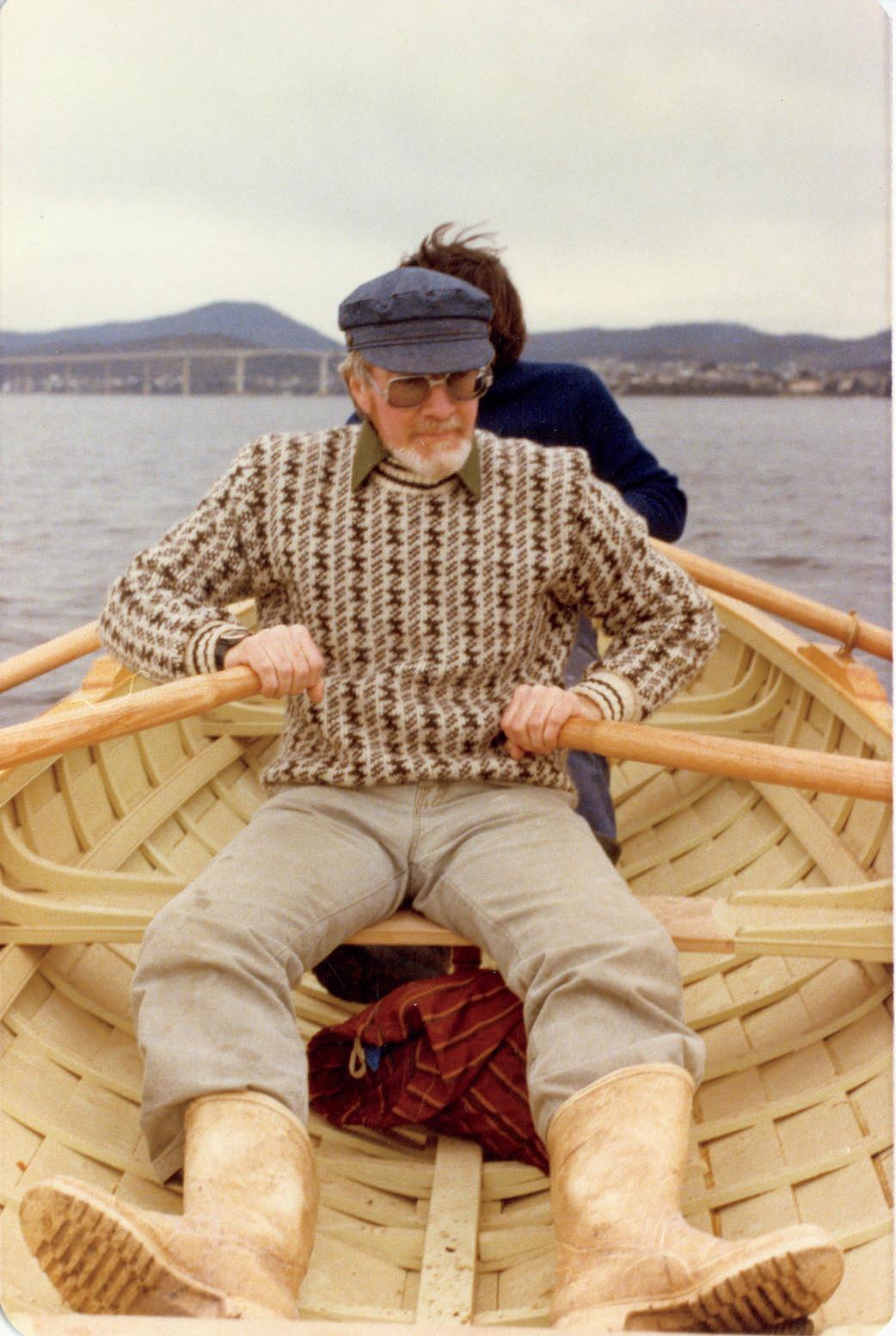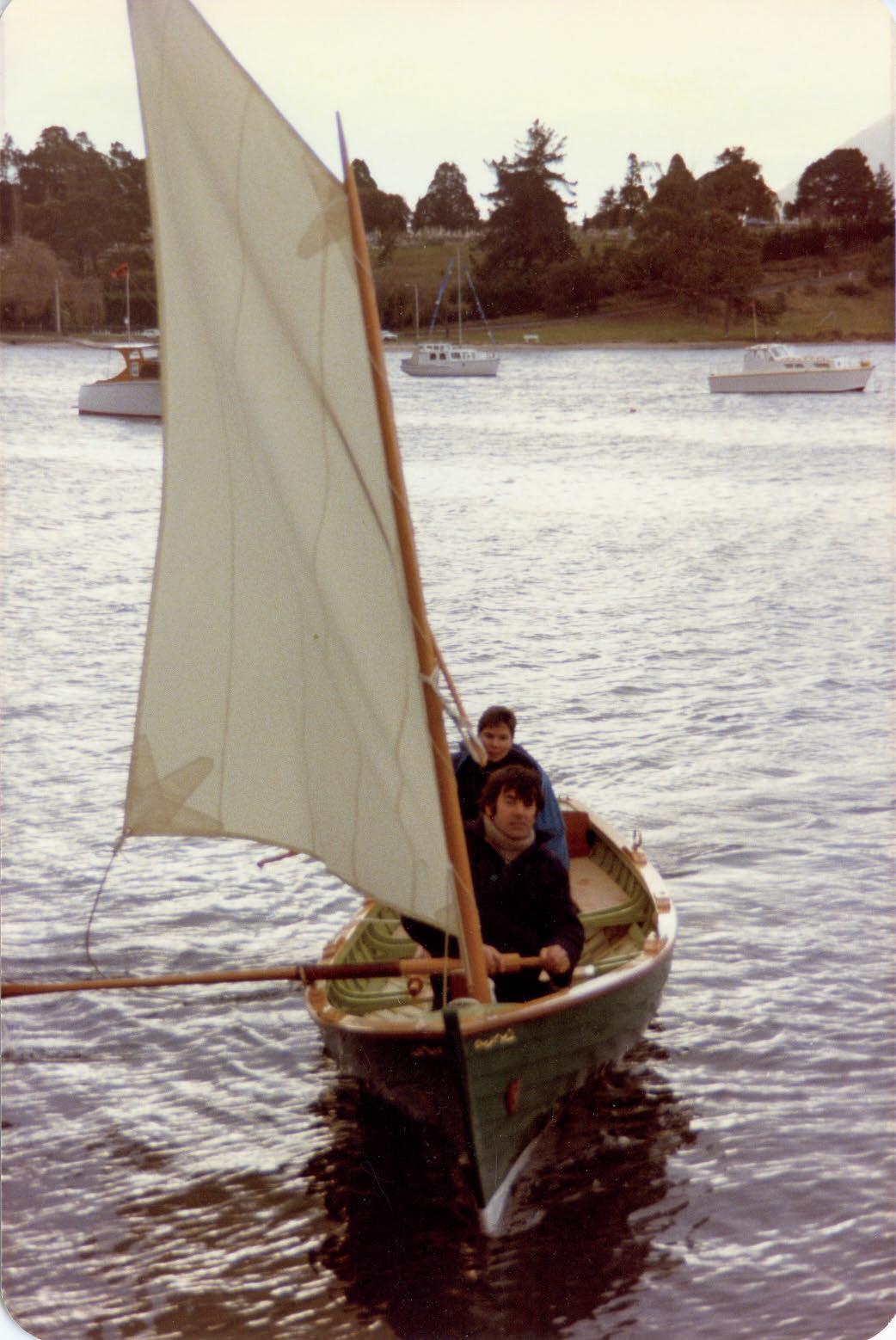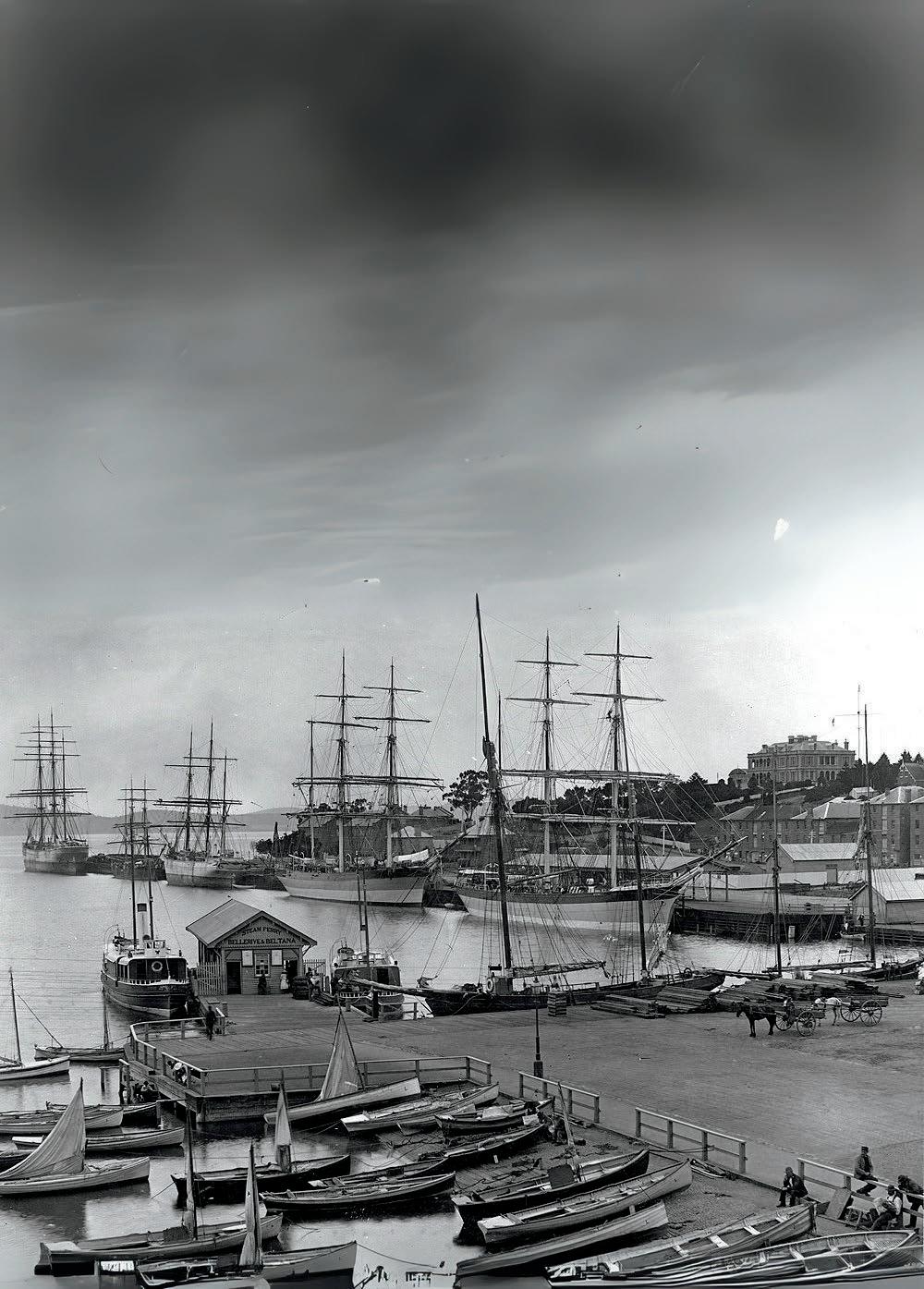
4 minute read
Ramping Lion & the gigs of Waterman’s Dock
BY EMILY QUINTIN
Up until the mid-twentieth century, waterman’s gigs or ‘pulling boats’ played a pivotal role in maritime communities; their sleek narrow design making them ideal for ferrying passengers, delivering mail, and even smuggling goods.
Gigs were once a vital part of Hobart’s early colonial settlement In the nineteenth century, these boats would shuttle pilots to ships and connect traders with vessels sitting out in the River Derwent’s wide harbour. These boats were also a way for passengers to get across from Hobart to the eastern shore.
Waterman’s gigs trace their origins to the coastal towns of England, particularly Deal, Whitby, and the Suffolk and Norfolk coasts. Built for speed under oar, these boats featured clinker construction, a narrow beam, and a distinctive high wineglass transom. The navy often relied on Deal-built gigs for their ship’s tenders, drawn to their speed and manoeuvrability.
Watermen, who owned and operated these gigs, were licensed to transport passengers for hire, and their base of operations, Watermans Dock, still carries their legacy in name. However, most early licensees did not row the boats themselves; instead, they employed boatmen often assigned convicts to operate them.
The gigs also found their way into the early competitive rowing scene, with recorded races dating as far back as 1820. These races were fiercely contested, attracting large crowds and significant wagers, with Tasmanian crews becoming local celebrities in the maritime sporting world.
Maritime historian Harry O'May described the evolution of these boats in Hobart River Craft:
" the boats of the 'eighties' were built to suit local conditions; they were 16 to 18 feet in length, with a beam of 5 feet 6 inches; they had centreboards and were rigged with a spritsail and jib with no ballast, so if they did happen to capsize, built of Huon Pine they floated and gave the occupant something to cling to until picked up These fine boats were in great demand at weekends and holidays The cost of hire was one shilling an hour "
The story of Ramping Lion
Maritime Museum Tasmania recently took delivery of Ramping Lion, a replica 1840s pulling boat, crafted from Huon pine. Hobart collector George Burrows commissioned well-known Battery Point boat builder Max Creese to build the replica gig in 1981. Creese created the design by studying a nineteenth-century photograph of pulling boats in Waterman’s Dock.
Local historian Graeme Broxam noted in Pride of the Port: The Watermen of Hobart Town:
"Careful investigation of surviving photographs reveals no set pattern for the design of Hobart's waterman's boats rather they seem to have been inspired by the personal whim and experience of their builders and owners "
Burrows named his replica Ramping Lion after an original waterman’s boat, Rampant Lion, constructed of six Huon pine planks on each side. The fittings on the replica are bronze, and there is decorative scrollwork with shields on the port and starboard bow. Burrows undertook the detailed paintwork himself and has provided the Museum with an album of images documenting the painstaking process of his work.
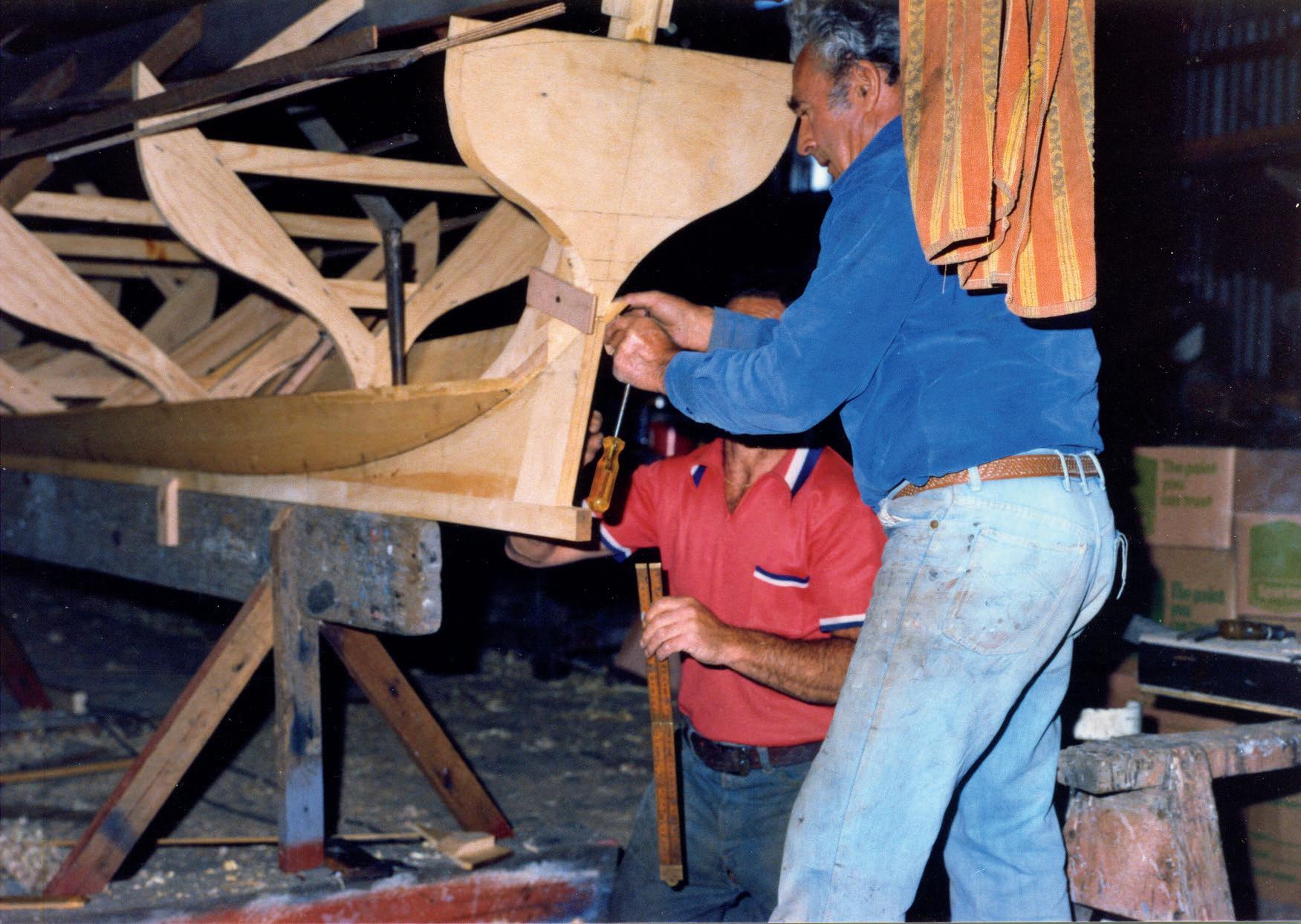
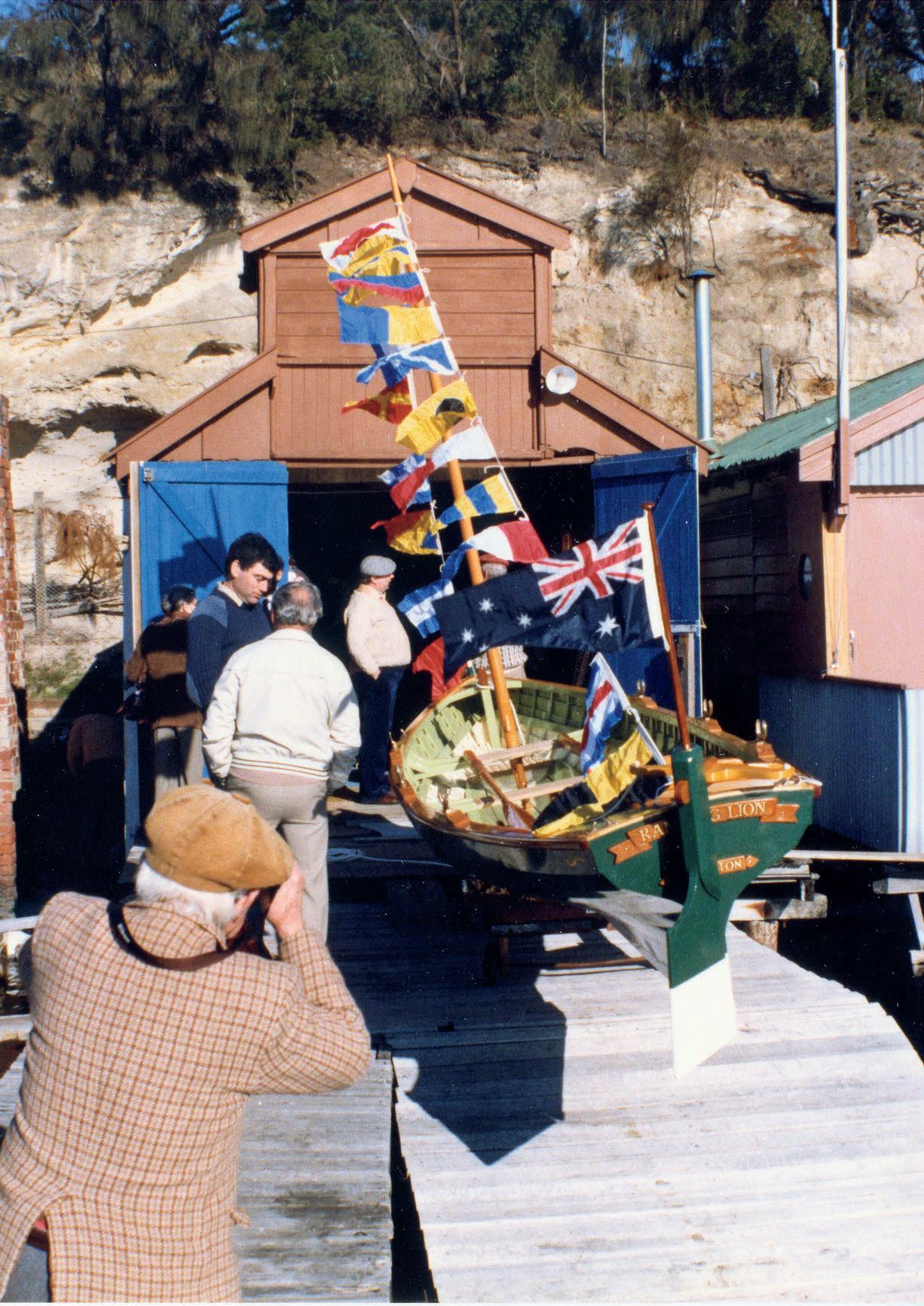
Graeme Broxam wrote about Rampant Lion in Pride of the Port: The Watermen of Hobart Town:
"The Rampant Lion (the press occasionally mutilated the name to Ramping Lion) was probably the new waterman's boat that Jacob Chandler was reported to be building for William Burman in October 1846. She was third across the line in the watermen's race in that year's regatta pulled by 'Burman & Anson'. With protests against the two leading boats on grounds that they were not bona fide waterman's boats, she was upgraded to first place and awarded a prize of £10 "
For years, George and Isabel Burrows used the replica gig before it was acquired by the Australian National Maritime Museum in Darling Harbour, Sydney. Eventually deemed surplus, the boat was generously offered to Maritime Museum Tasmania.
After more than twenty years out of the water, Ramping Lion was moved from the Museum’s storage facility in Cambridge to Kettering, where the boat was prepared for her Australian Wooden Boat Festival debut.
Ramping Lion’s arrival at Watermans Dock in February, helmed by George Burrows, was a fitting tribute to the watermen of old, echoing the days when gigs were the lifeline of the city’s maritime transport and sport.
